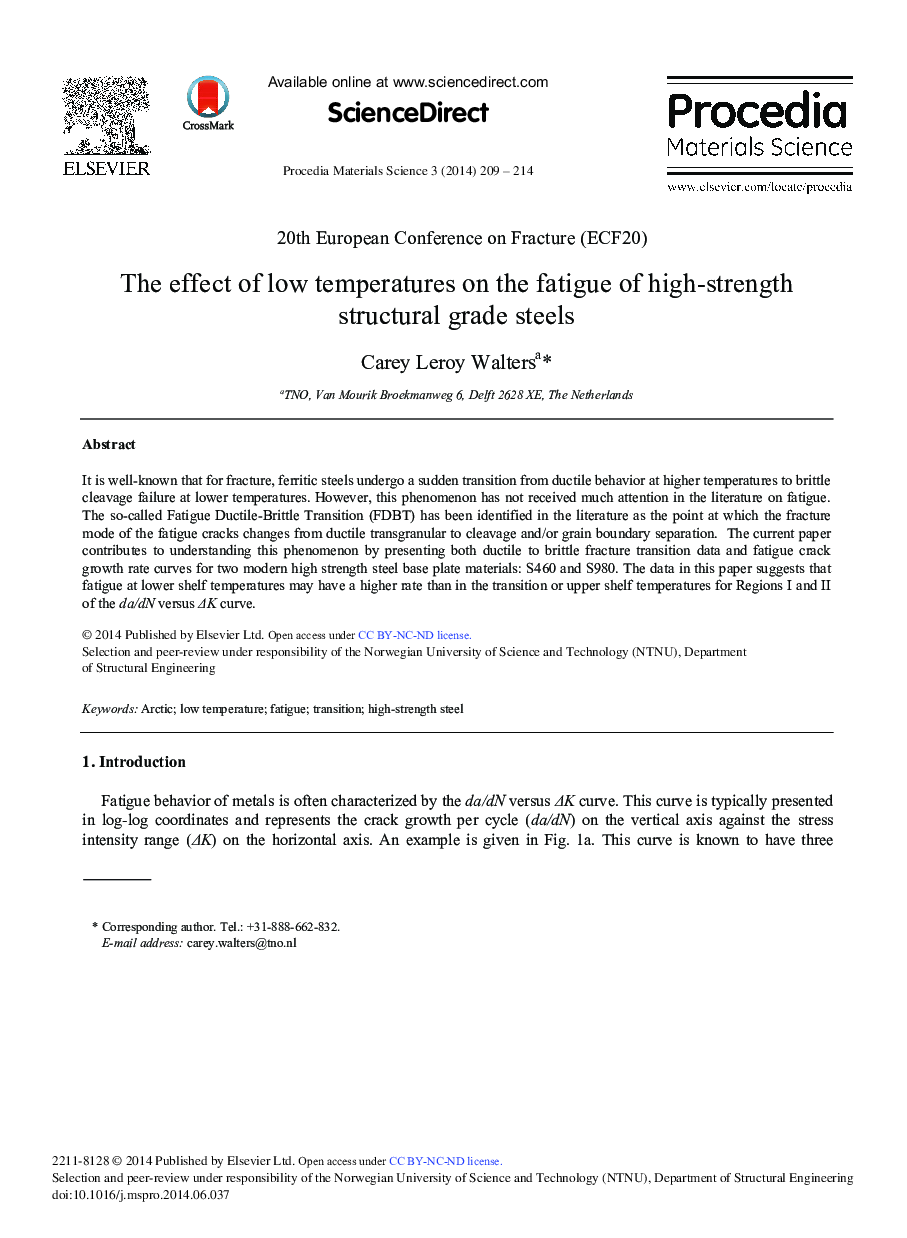| Article ID | Journal | Published Year | Pages | File Type |
|---|---|---|---|---|
| 1634778 | Procedia Materials Science | 2014 | 6 Pages |
Abstract
It is well-known that for fracture, ferritic steels undergo a sudden transition from ductile behavior at higher temperatures to brittle cleavage failure at lower temperatures. However, this phenomenon has not received much attention in the literature on fatigue. The so-called Fatigue Ductile-Brittle Transition (FDBT) has been identified in the literature as the point at which the fracture mode of the fatigue cracks changes from ductile transgranular to cleavage and/or grain boundary separation. The current paper contributes to understanding this phenomenon by presenting both ductile to brittle fracture transition data and fatigue crack growth rate curves for two modern high strength steel base plate materials: S460 and S980. The data in this paper suggests that fatigue at lower shelf temperatures may have a higher rate than in the transition or upper shelf temperatures for Regions I and II of the da/dN versus ÎK curve.
Related Topics
Physical Sciences and Engineering
Materials Science
Metals and Alloys
Authors
Carey Leroy Walters,
